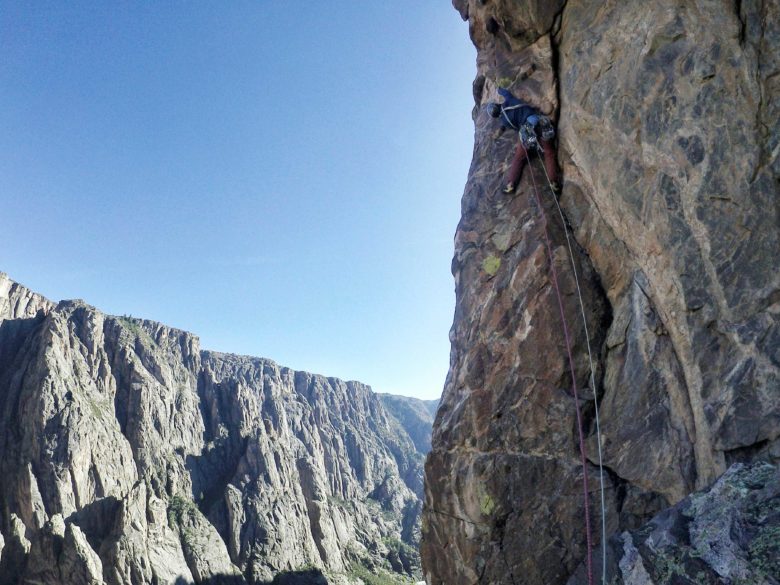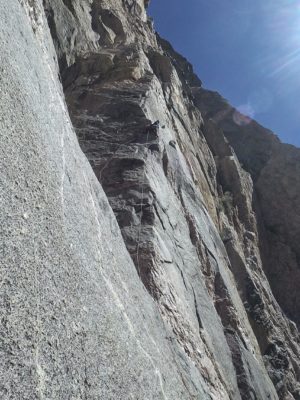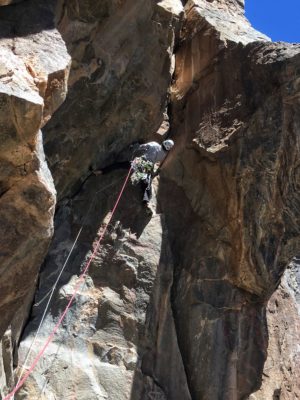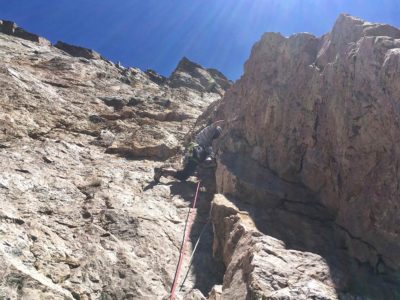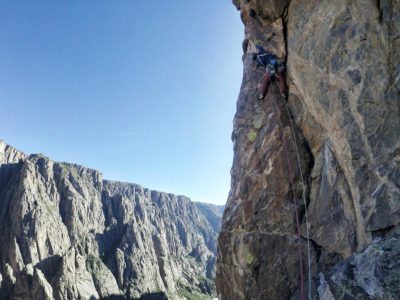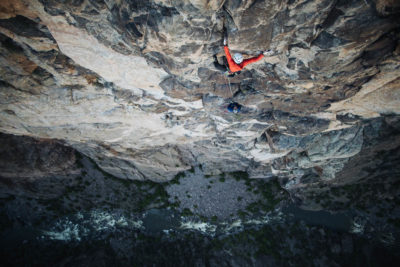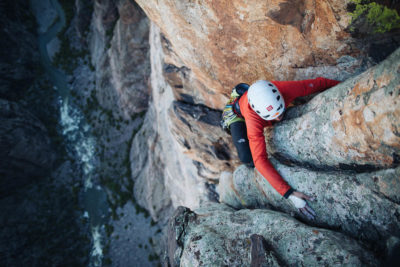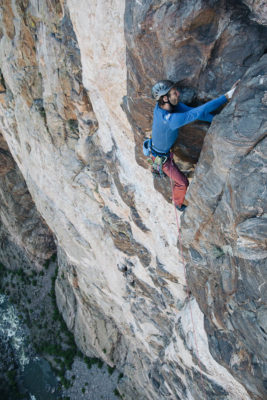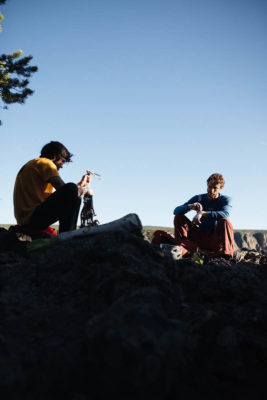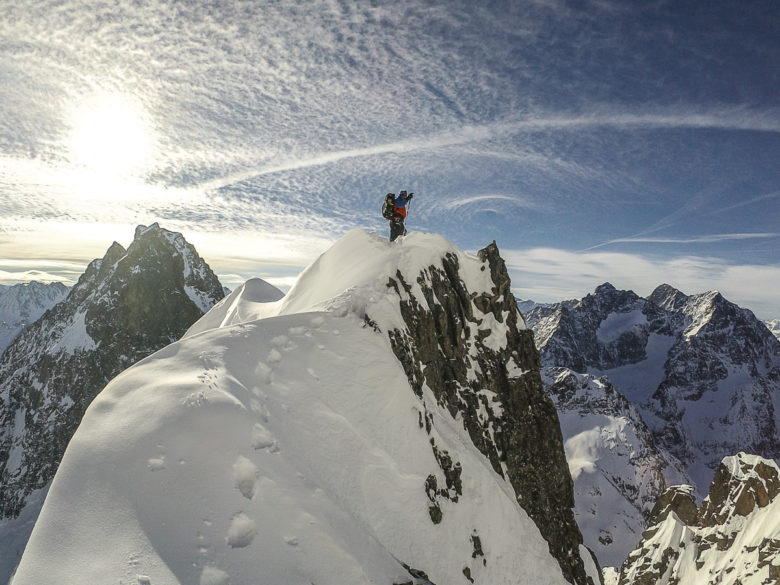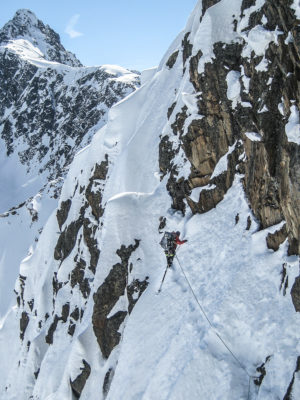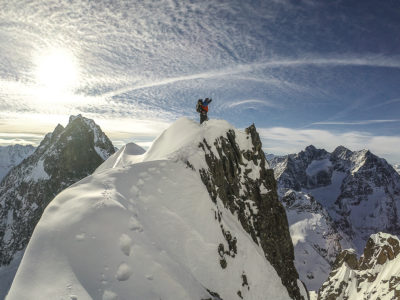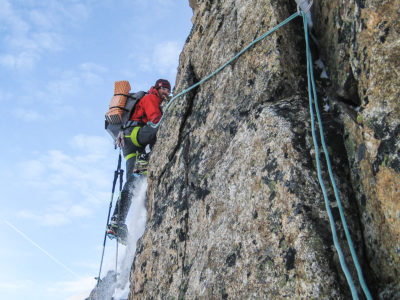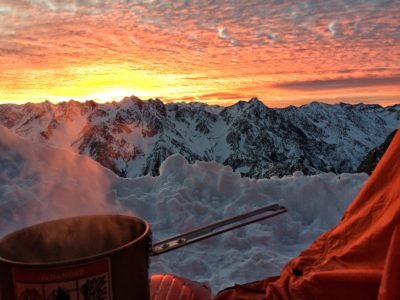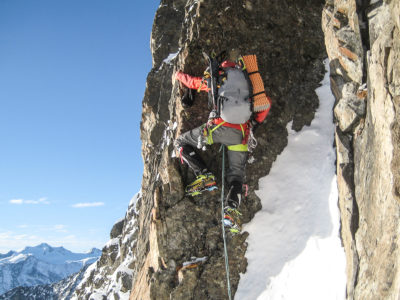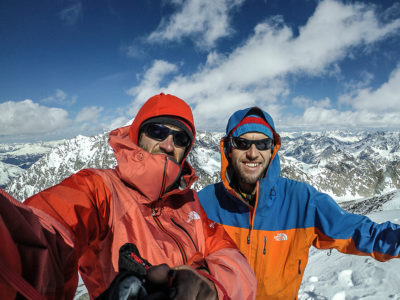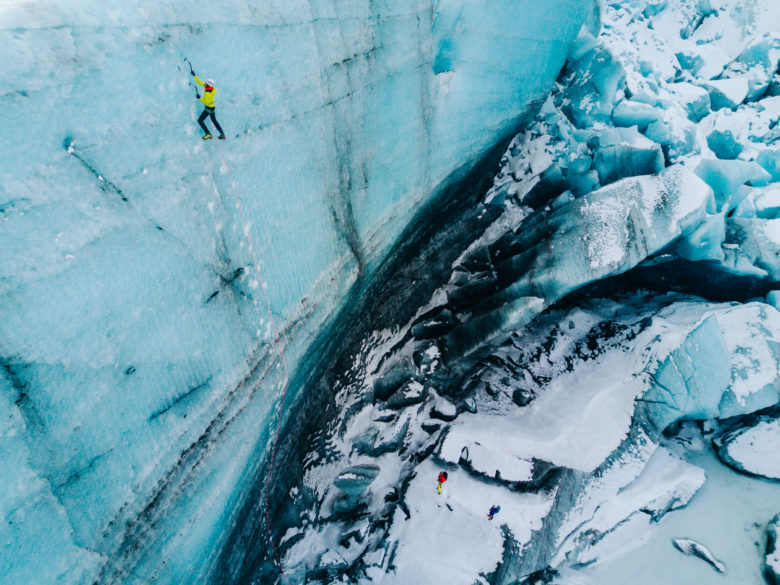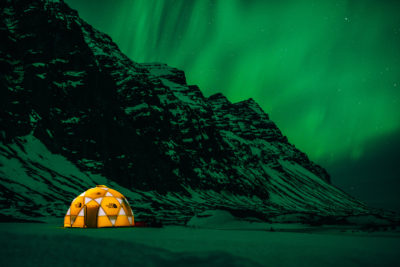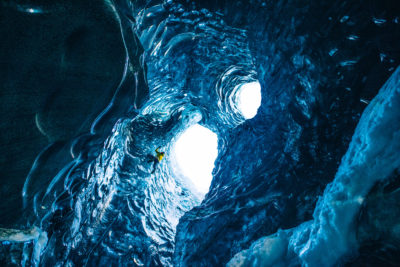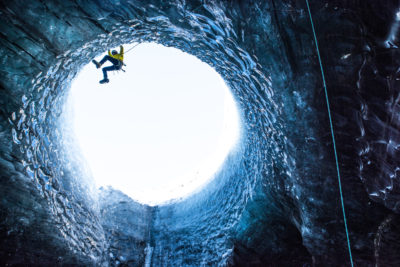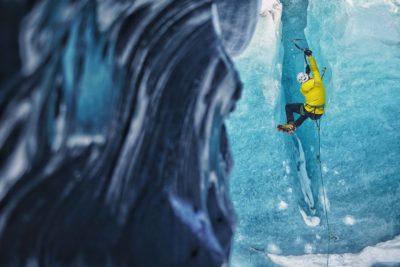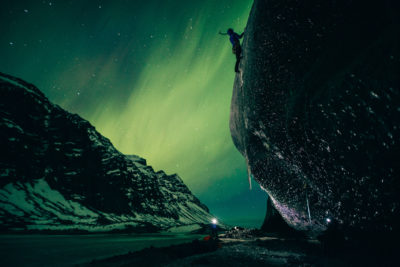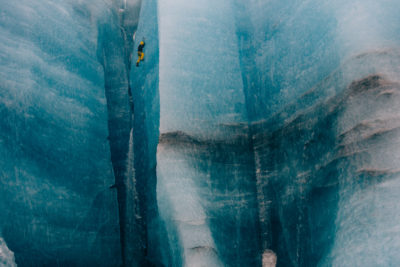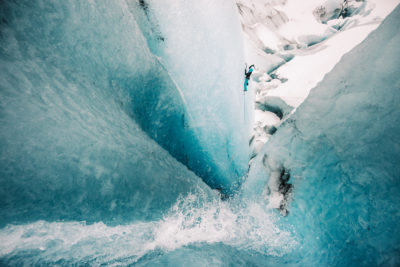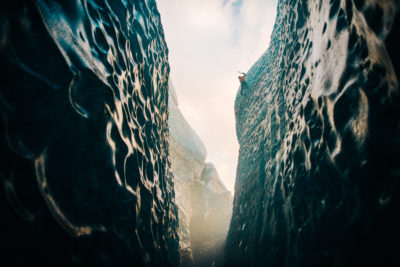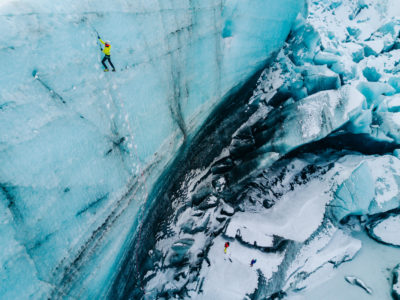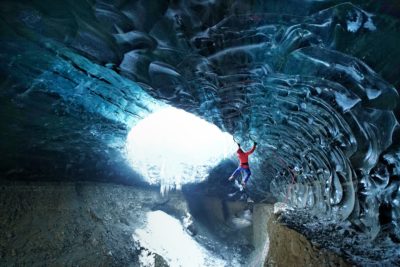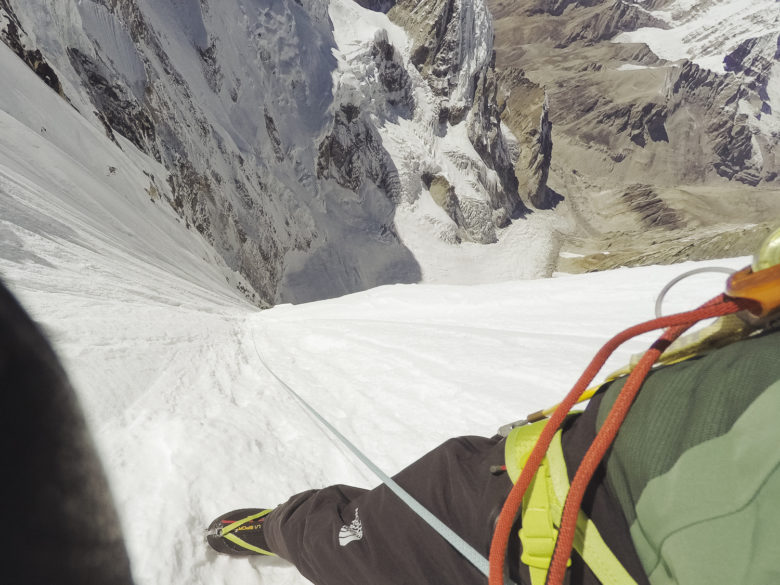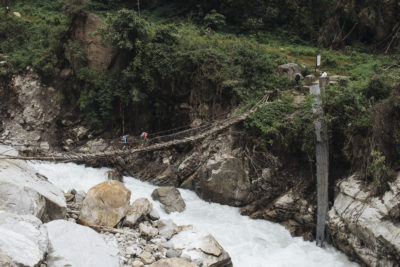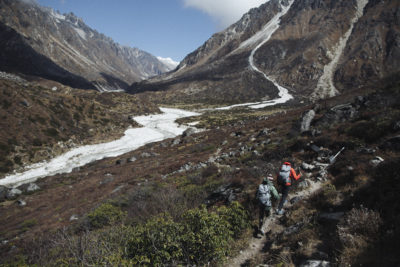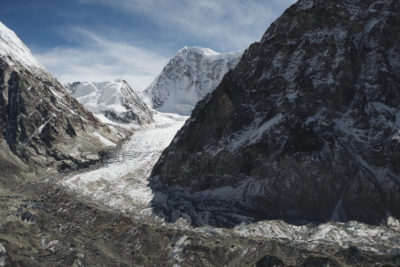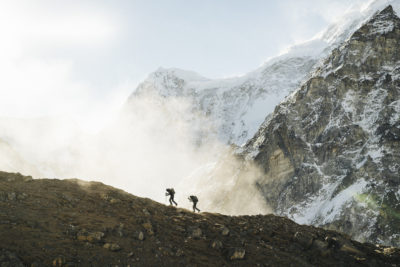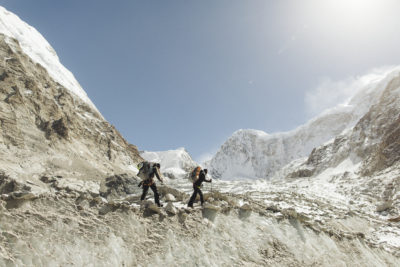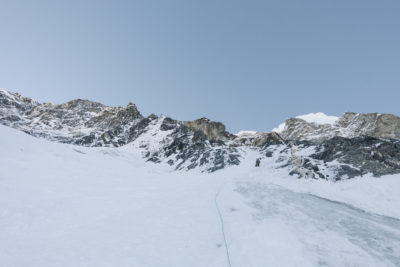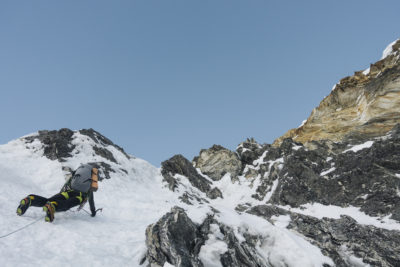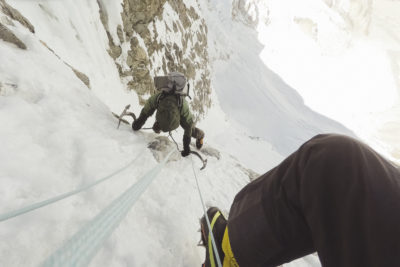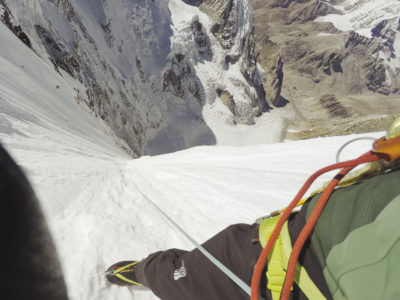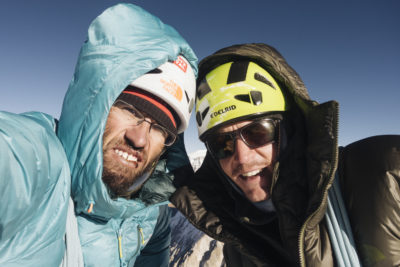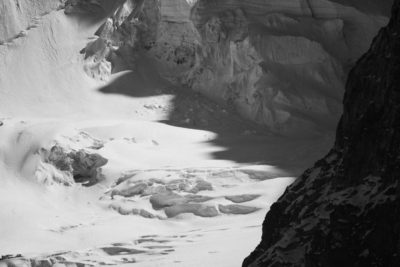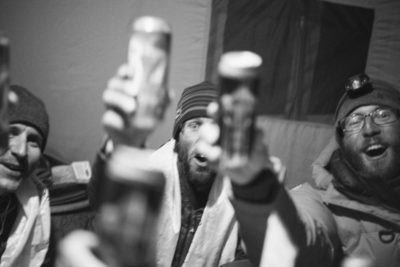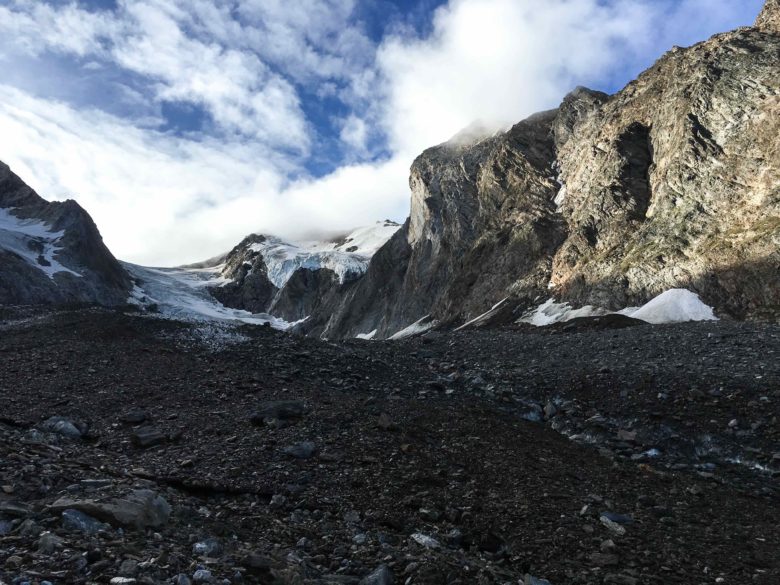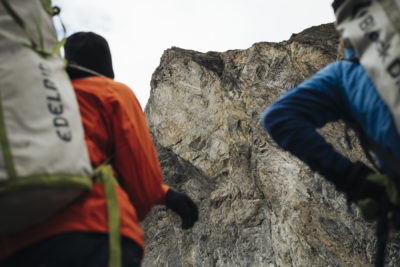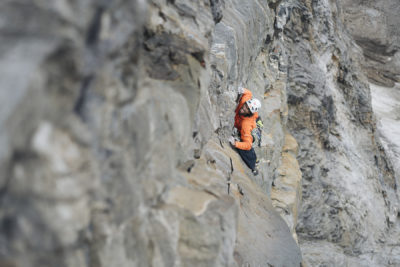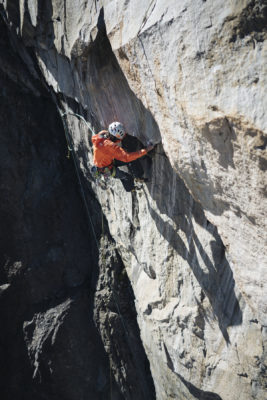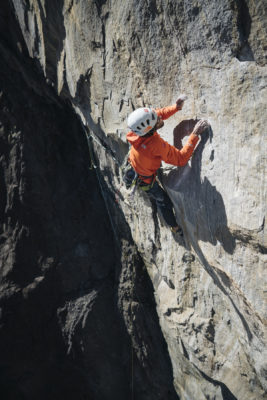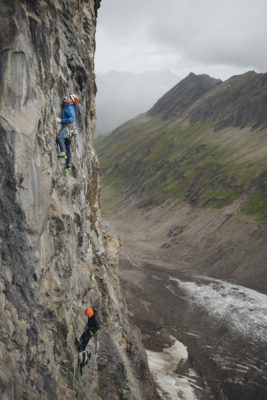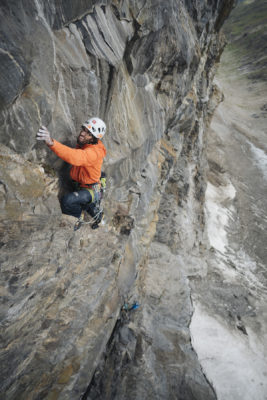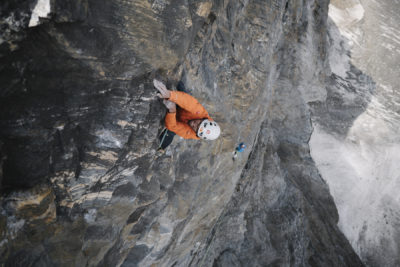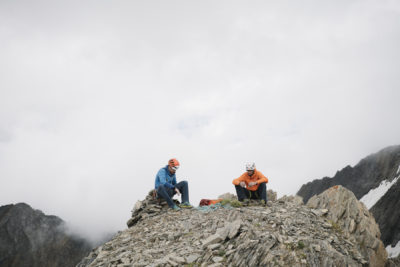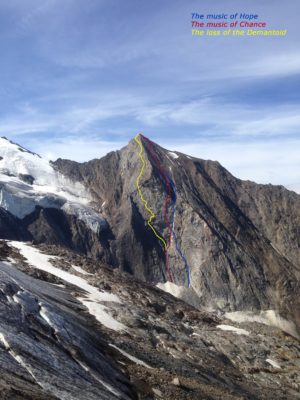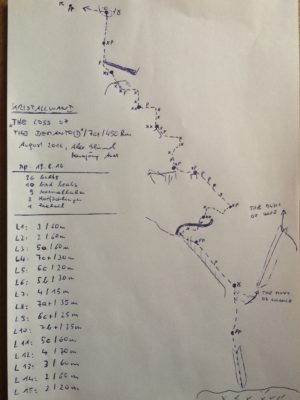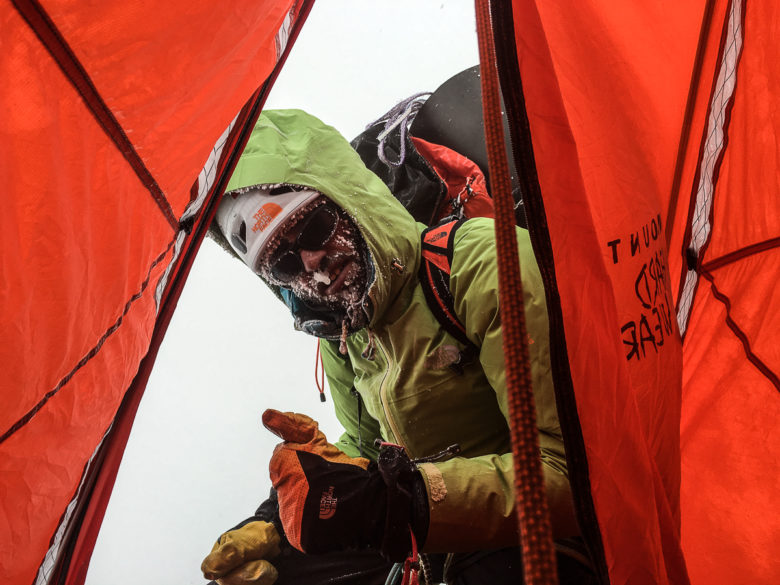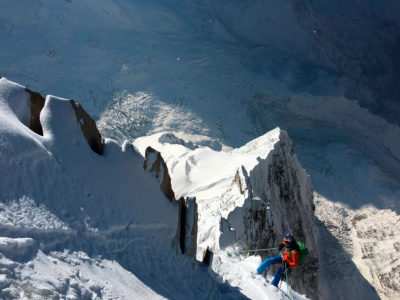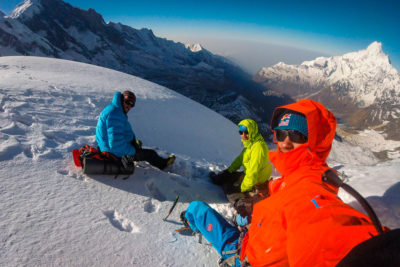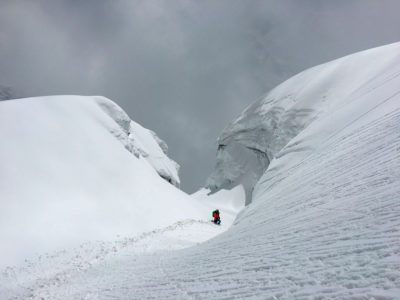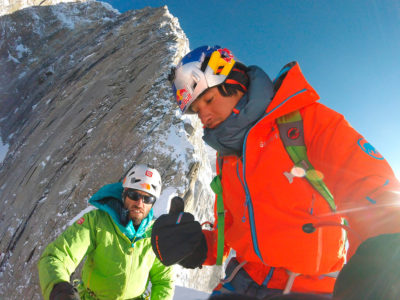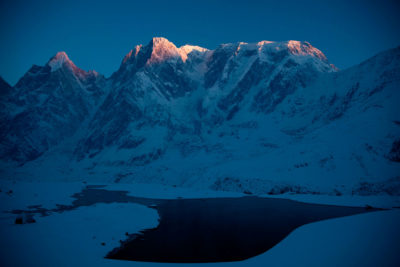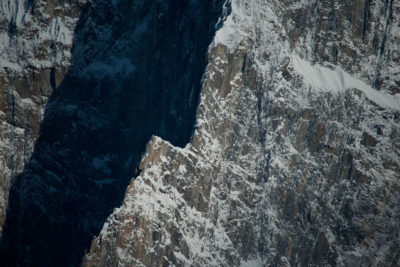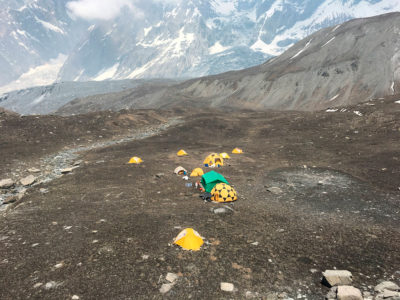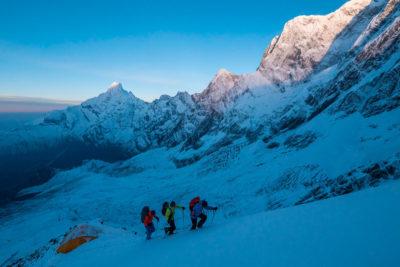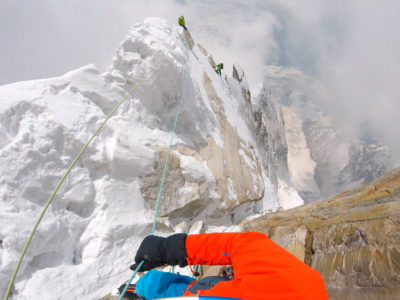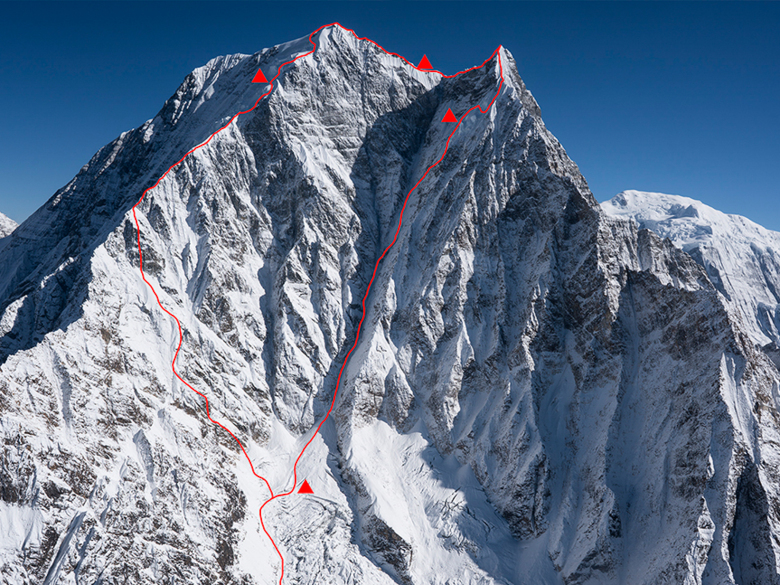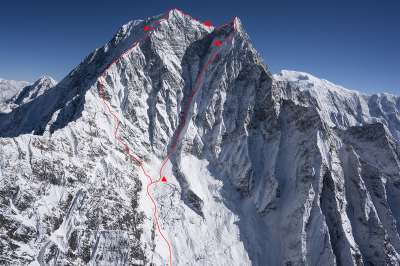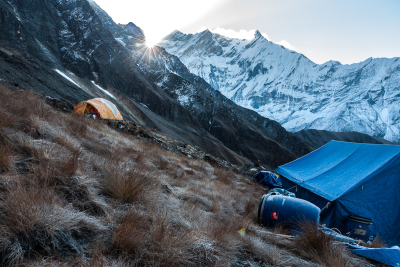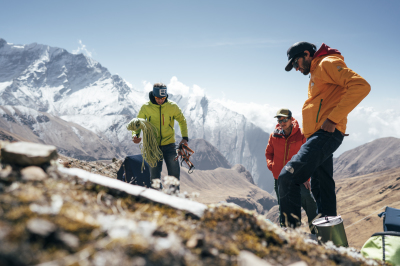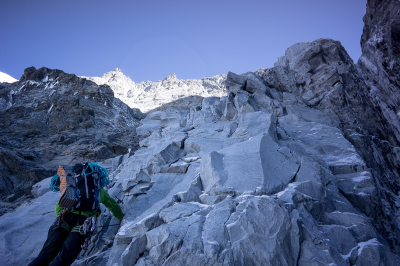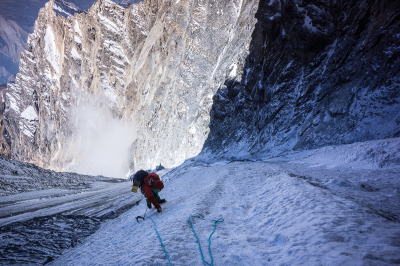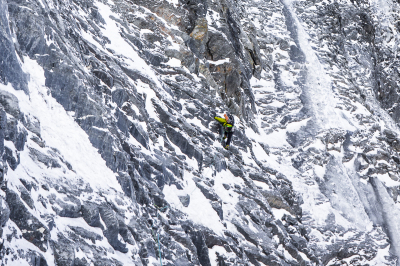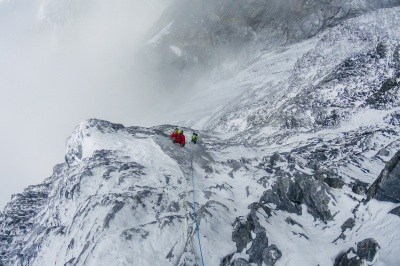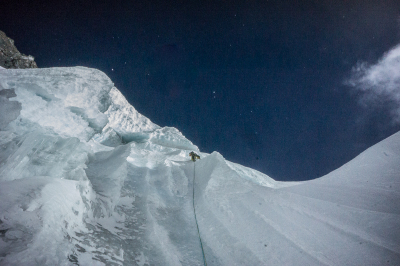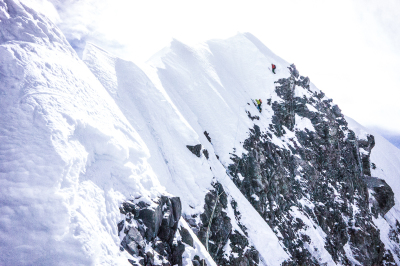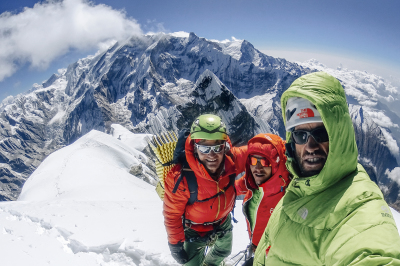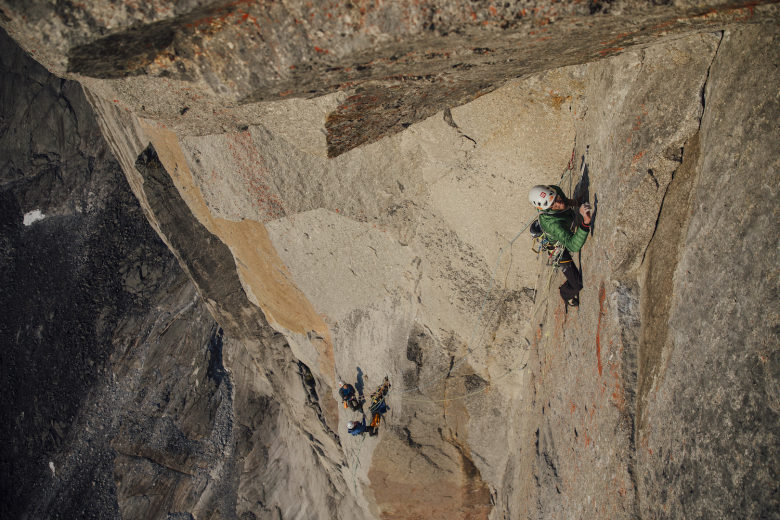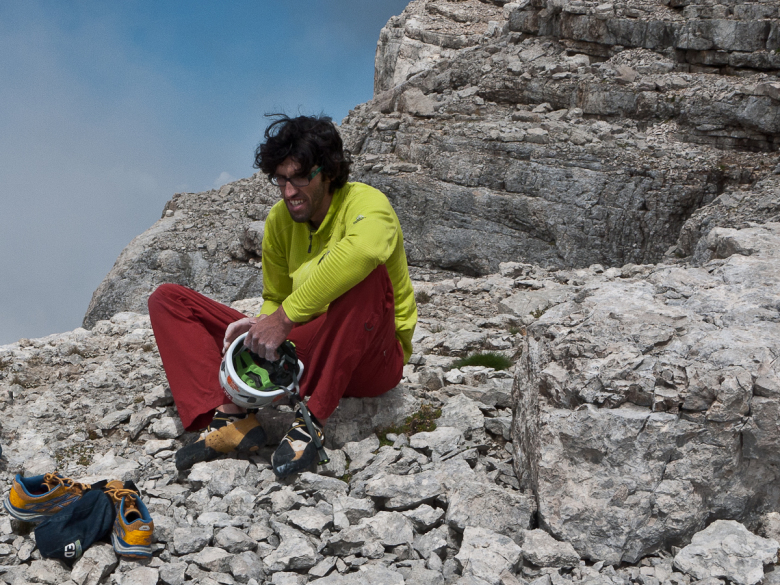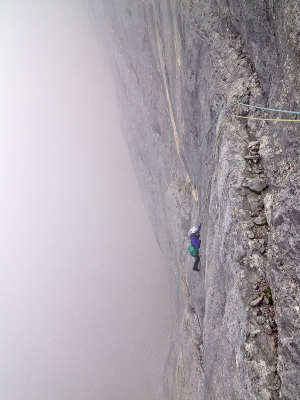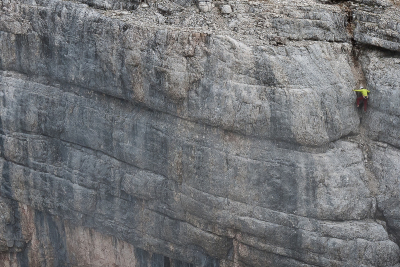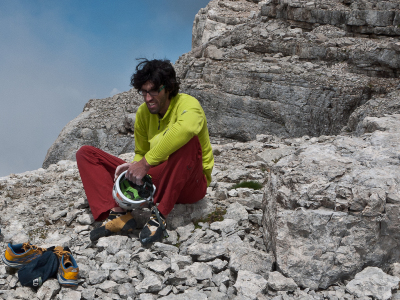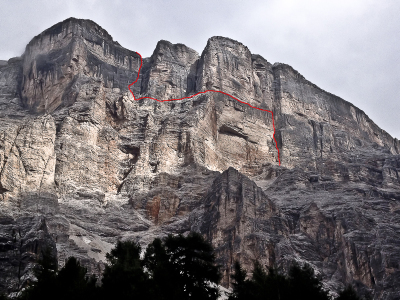28. September 2015
One year before our expedition took place it were my friends Iker and Eneko Pou, getting inspired by the pictures of the Chukotka walls they had seen of Australian climbers Chris Fitzgerald and Chris Warners expedition to the area in 2014. Because of the big potential of first ascents on the moderate high walls they searched more team members. Immediately I was on board, furthermore joined by Siebe Vanhee and Jacopo Larcher.
Being so high up in the Northern hemisphere gave us the opportunity to choose our climbing rhythm because of the 24 hours of sunlight. As a multidisciplinary team with a mixed kind of qualities we aimed for the obvious and the natural climbs. Climbing free and in one push but also the style of fixing ropes and focussing on free climbing a harder and challenging line was an important goal of the trip. For all of us the values of clean climbing and avoiding unnecessary bolting were of high importance.
To be as efficient as possible we split into two teams, one comprised of Jacopo, Siebe and myself, the other of Iker and Eneko. Most routes we climbed in a single push, weather permitting, and using trad gear only, apart from one line, the “Red Corner“ on the wall of Commander, where five hand-drilled bolts were placed.
The walls as well as the environment, including the horrible mosquitos, who stayed during our whole journey and definitely made the basics of living like a little challenge, left a great impression to all of us.
A short sum up of the eight new routes on the 300m to 500m high walls of The Commander, The General and The Monk:
The Commander
Into the Wild – 7a/425m – Iker & Eneko Pou
The Two Parrots – 7a/320m, Iker & Eneko Pou
Red Corner – 7c+/450m, Larcher, Vanhee, Auer
The General
Wake up in Siberia – 6b/240m, Larcher, Vanhee, Auer
Aupa – 6c/300m, Iker & Eneko Pou
Mosquito Rock Tour – 7a+/450m, Iker & Eneko Pou
From Zero to Hero – 7a/490m – Larcher, Vanhee, Auer
The Monk
Sketchy Django – 6a+/400m, Larcher, Vanhee, Auer
-
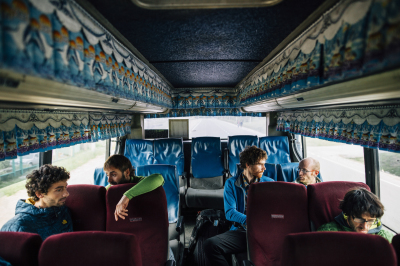
-
Long travel to Bilibino. © The North Face/Elias Holzknecht
-
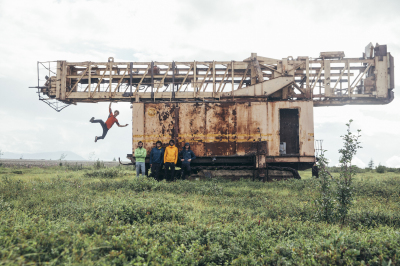
-
Never be too tired to play around, Siebe. © The North Face/Elias Holzknecht
-
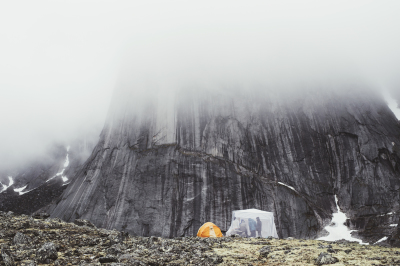
-
Basecamp life during unstable weather. © The North Face/Elias Holzknecht
-
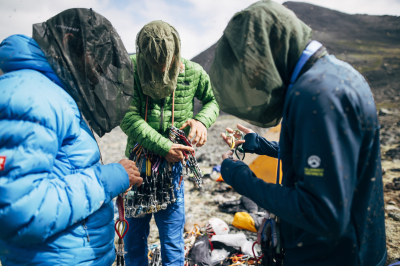
-
No more to add. © The North Face/Elias Holzknecht
-
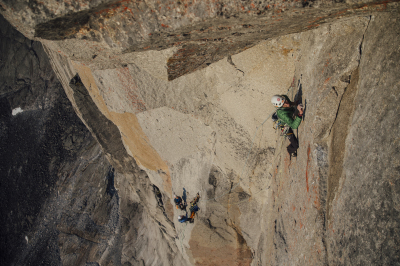
-
These are the moments, which are making all the effort worth it. © The North Face/Elias Holzknecht
-
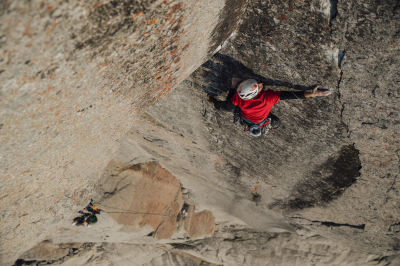
-
Jacopo crimping hard. © The North Face/Elias Holzknecht
-
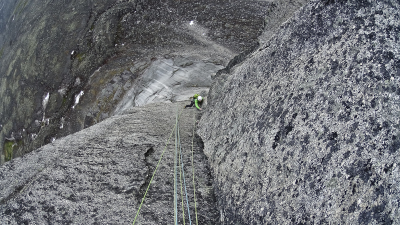
-
During the firs ascent of ‚From Zero to Hero‘. © Archiv Auer
-
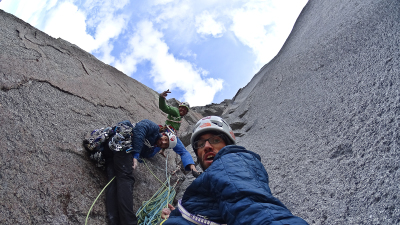
-
While opening the ‚Red Corner‘. © Archiv Auer
-
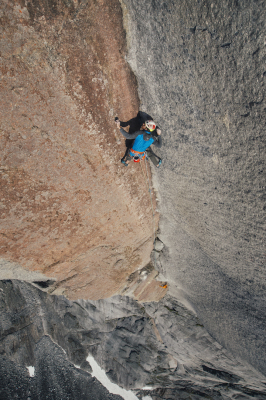
-
View down the ‚Red Corner‘, the hardest route we’ve opened during our trip. © The North Face/Elias Holzknecht
-
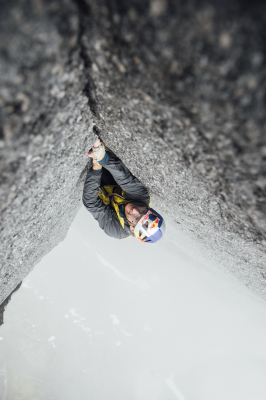
-
Iker just before an incoming storm. © The North Face/Elias Holzknecht
-
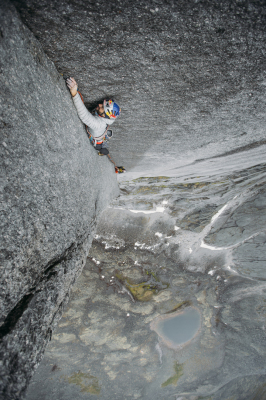
-
Eneko high up on ‚Moskito Rock Tour‘. © The North Face/Elias Holzknecht
-
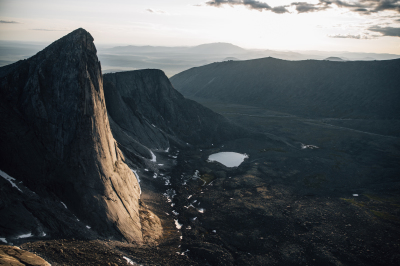
-
View down to Basecamp. © The North Face/Elias Holzknecht
-
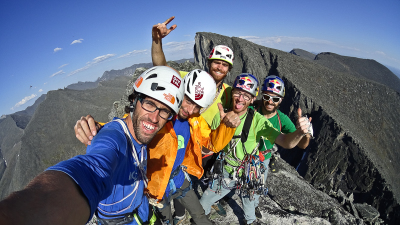
-
Team on top. © Archiv Auer
-
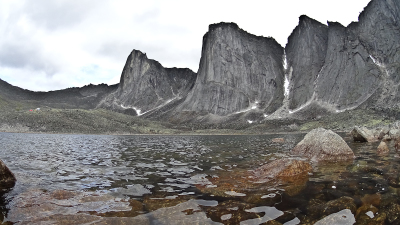
-
General, Commander and Monk from left to right. © Archiv Auer

